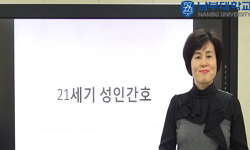본 논문에서는 고분자 전해질막 연료전지, 염료감응형 태양전지 그리고 리튬이온 배터리에 사용되는 전해질에 대하여 연구 하였다. 전해질은 고체, 액체 그리고 고분자에 이르기까지 고효...
http://chineseinput.net/에서 pinyin(병음)방식으로 중국어를 변환할 수 있습니다.
변환된 중국어를 복사하여 사용하시면 됩니다.
- 中文 을 입력하시려면 zhongwen을 입력하시고 space를누르시면됩니다.
- 北京 을 입력하시려면 beijing을 입력하시고 space를 누르시면 됩니다.
https://www.riss.kr/link?id=T13830665
- 저자
-
발행사항
충주 : 건국대학교 일반대학원, 2015
-
학위논문사항
Thesis(doctoral) -- 건국대학교 일반대학원 , 응용화학전공 응용화학 , 2015. 8
-
발행연도
2015
-
작성언어
영어
- 주제어
-
발행국(도시)
대한민국
-
형태사항
147 ; 26 cm
-
일반주기명
지도교수: 김환기
- 소장기관
-
0
상세조회 -
0
다운로드
부가정보
국문 초록 (Abstract)
본 논문에서는 고분자 전해질막 연료전지, 염료감응형 태양전지 그리고 리튬이온 배터리에 사용되는 전해질에 대하여 연구 하였다. 전해질은 고체, 액체 그리고 고분자에 이르기까지 고효율 및 장기안정성을 목표로 설계되었으며 연료전지의 경우 일반적인 조건에 따른 각 고분자 전해질 막들은 기존의 탄화수소계 막 들과 비교했을 때 비슷하거나 더 높은 성능을 보여주었으며, 대체로 내구도 적인 측면에서 크게 개선된 모습을 확인할 수 있었다. 염료감응형 태양전지의 전해질의 경우 상온에서 액체상태를 가지는 전해질을 목표로 합성 하였으며 각각의 효율은 일반적으로 사용되는 전해질과 비교하여 높은 안정성을 나타내었으며 장시간에 따른 효율변화 역시 기존의 것들과 비교하였을 때 크게 개선된 결과를 얻을 수 있었다. 마지막으로 리튬이온 배터리에 사용되는 전해질 중에 가장 높은 이온전도도를 가지는 LiFSI를 합성하였다. 이 전해질의 경우 높은 합성단가와 합성의 어려움으로 인해 크게 상업화 되지 못하였다. 그렇기에 우리는 이 전해질의 공정개선을 목표로 합성을 진행하였다. 낮은 단가를 목표로 합성된 이 전해질은 분석결과 성공적으로 합성되었음을 확인하였으며, 일반적으로 사용되는 LiPF6와 이온전도도를 측정한 결과 또한 높은 전도도를 보여주었다. 이와 같은 새로운 형태의 각각의 전해질들은 각 분야에 사용되는 기존의 전해질의 단점을보완하고 더욱 높은 효율과 안정성을 나타내는 전해질 개발의 가능성을 나타냈으며, 그 대안으로서 사용될 시기가 더욱 앞당겨 질 수 있을 것으로 기대된다.
다국어 초록 (Multilingual Abstract)
The rapid increase of the carbon dioxide concentration from 280 ppm to 380 ppm within the last 100 years and its suspected impact on the earth's climate has raised significant attention within the last few years. The basic question is how to achieve a...
The rapid increase of the carbon dioxide concentration from 280 ppm to 380 ppm within the last 100 years and its suspected impact on the earth's climate has raised significant attention within the last few years. The basic question is how to achieve a sustainable energy/electricity-supply for the world in the upcoming decades without employing fossil fuels. Since the main renewable energy source available.
My research focuses on the development of polymer membranes in polymer electrolyte membrane fuel cell. In PEMFC, Although Nafion®, the most popular polymer electrolyte membrane, has superior physical, chemical and electrical properties; they also have some disadvantages including high manufacturing cost, complicated process and thermal stability. Hydrocarbon membrane which is investigated by many research groups in order to replace Nafion® has some drawbacks such as high solubility and low mechanical strength. Hydrocarbon membranes of cross linked, branched, pores filling type have also problems in mass production and commercialization.
To overcome above problems, we are going to develop novel monomer and polymer with high conductivity, high selectivity toward anions and cations molecules, high mechanical strength and chemical stability. Our research mainly consists of some parts: (1) development of monomer containing multi-ion-exchange groups, (2) development of polymer electrolyte membrane containing comb or cluster type monomer with wide hydrophilic and hydrophobic channels, (3) development of polymer electrolyte membrane with high stability, and (4) characterization of membrane morphology using electrochemical techniques. In this research, I try to synthesized block copolymer, anti oxidant moiety in polymer, and nano graphene structure in polymer for the good performance and durability.
By further pursuing new and/or optimal polymer, monomer structures following these problems, extra ordinarily useful materials possessing well-balanced properties must emerge for electrolytes of PEMFC in the near future.
목차 (Table of Contents)
- CHAPTER 1 Introduction of Proton Exchang Membrane Fuel Cells 2
- 1.1. Proton Exchange membrane Fuel Cell (PEMFC) 2
- 1.2. Review of Proton Exchange Membranes for PEMFCs 5
- CHAPTER 2 Synthesis and properties of sulfonated poly(N-methylisatin-biphenylene) proton exchange membrane by superacid-catalyzed polymerization 12
- 2.1. Introduction 12
- CHAPTER 1 Introduction of Proton Exchang Membrane Fuel Cells 2
- 1.1. Proton Exchange membrane Fuel Cell (PEMFC) 2
- 1.2. Review of Proton Exchange Membranes for PEMFCs 5
- CHAPTER 2 Synthesis and properties of sulfonated poly(N-methylisatin-biphenylene) proton exchange membrane by superacid-catalyzed polymerization 12
- 2.1. Introduction 12
- 2.2. Experimental 14
- 2.3. Results and Discussion 16
- 2.4. Conclusions 25
- CHAPTER 3 Synthesis and properties of grafting sulfonated polymer containing isatin by super acid-catalyzed polyhydroxyalkylation reaction for PEMFC 26
- 3.1. Introduction 26
- 3.2. Experimental 29
- 3.3. Results and Discussion 32
- 3.4. Conclusions 41
- CHAPTER 4 Preparation and characterization of grafted propane sulfonic acid polyphenylene membrane via superacid-catalyzed reaction 42
- 4.1. Introduction 42
- 4.2. Experimental 43
- 4.3. Results and Discussion 48
- 4.4. Conclusions 58
- CHAPTER 5 Synthesis and characterization of pendant propane sulfonic acid on phenylene based copolymers by superacid-catalyzed reaction 59
- 5.1. Introduction 59
- 5.2. Experimental 61
- 5.3. Results and Discussion 66
- 5.4. Conclusions 75
- CHAPTER 6 Novel cyclotetrasiloxane tetraimidazolium salts as high performance quasi solid state electrolyte for dye-sensitized solar cells 76
- 6.1. Introduction 76
- 6.2. Experimental 78
- 6.3. Results and Discussion 82
- 6.4. Conclusions 91
- CHAPTER 7 Novel cyclic sulfonium iodide containing siloxane high performance electrolyte for dye-sensitized solar cell 92
- 7.1. Introduction 92
- 7.2. Experimental 94
- 7.3. Results and Discussion 98
- 7.4. Conclusions 107
- CHAPTER 8 Synthesis of bis(fluorosulfonyl)imide lithium salt for lithium ion batteries 108
- 8.1. Introduction 108
- 8.2. Experimental 109
- References 116
- Abstract (in Korean) 138













